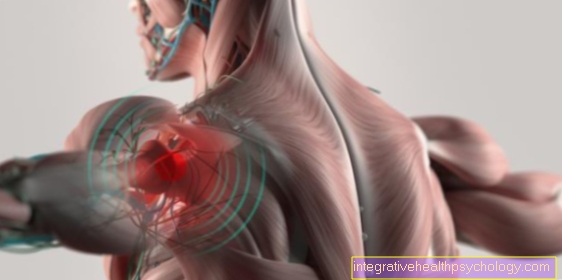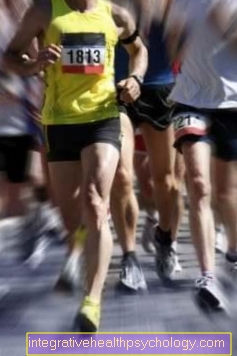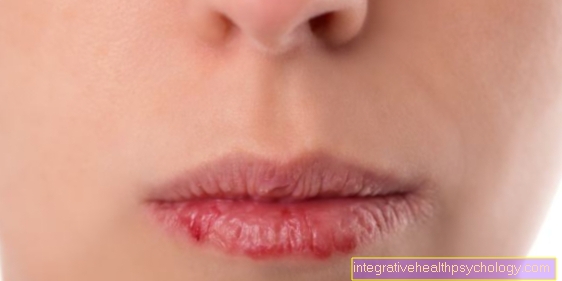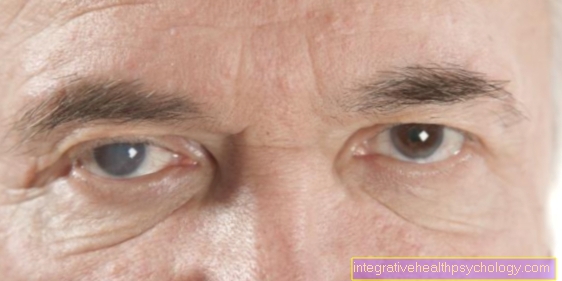EPEC - what is it?
What is an EPEC?
EPEC stands for enteropathogenic Escherichia coli. Escherichia coli is a group of bacteria that is divided into various subgroups, including the EPEC and EHEC (enterohaemorrhagic E. coli) groups.
EPEC is a special strain of the Escherichia Coli bacterium. Escherichia Coli bacteria can also be found in the intestines of healthy people. There they are part of the healthy intestinal flora and are not of any further concern. EPEC, on the other hand, are bacteria that are capable of causing diseases in humans.
EPEC bacteria cause infectious gastrointestinal infections, especially in infants and small children, less often in adults. EPEC infections nowadays occur mainly in developing countries with low hygiene standards, but have become rarer in Europe.

Causes of Infection
The human intestine contains numerous E. coli bacteria; they are part of the normal intestinal flora and do not cause disease. However, certain subtypes of E. coli, such as EPEC, can cause intestinal infections.
An infection with EPEC pathogens can take place in different ways. For example from person to person through faecal-oral transmission in the event of inadequate hygiene measures.
- A person who is infected with EPEC pathogens excretes them through the stool. If there is insufficient hygiene, the pathogens can then be transmitted to other people.
- Other routes of infection are food contaminated by humans, such as fruit and vegetables, but also contaminated drinking water.
- Animals can also be infected with EPEC, so meat, fish and dairy products from infected animals are also considered sources of infection.
Also read: Infectious diarrheal diseases
Symptoms of EPEC infection
An infection with EPEC bacteria is similar to a typical diarrheal illness. The incubation period is about a week. But symptoms are also possible after a few days.
- The main symptom of EPEC infection is watery diarrhea. These diarrhea can be very serious.
- In addition, blood can be added. This usually only occurs in the course of the disease, after the intestinal wall has been damaged.
- Other symptoms such as abdominal pain, cramps or vomiting are also possible.
- Mixed infections with other pathogens causing diarrhea are also possible. This can make an accurate diagnosis difficult.
Asymptomatic courses are also possible. In this case, no discomfort will be noticed. Nevertheless, pathogens may be excreted, so that asymptomatically infected people can continue to infect other people.
Please read the following article: Inflammation of the small intestine
Diagnosis of EPEC
There are various ways of detecting an infection with EPEC pathogens. Either by detecting the pathogen or its components in a stool sample or by detecting specific antibodies against the EPEC pathogen in a blood test.
Escherichia Coli bacteria can be grown on special culture media and classified in this way. A laboratory can also accurately detect certain proteins that are only formed by EPEC. These proteins are also responsible for the pathogenic properties of the EPEC bacteria.
Diagnostics that are specifically aimed at the detection of EPEC pathogens are usually only carried out if there is justified suspicion of an infectious gastrointestinal disease, for example due to severe diarrhea lasting several days.
Treatment of EPEC
One of the most important therapeutic steps for diarrheal diseases is adequate fluid intake. A large amount of water is lost from the body due to the diarrhea. To compensate for this, care should be taken to drink enough. This is especially true for children.
- For adults, a guide size of around three liters per day is given as a guide. Special electrolyte and sugar solutions, which can be bought in many pharmacies, are particularly suitable. They not only serve to supply water, but also compensate for salt losses.
- A doctor should always be consulted in the event of severe diarrhea. This is especially true for diseases in childhood.
The intestinal absorption of water and electrolytes may no longer be sufficient to cover the losses. In this case, the fluid and salt balance can be balanced with infusions. Inpatient monitoring in a hospital may be necessary for this.
If the course is very severe, the kidneys can be impaired. In this case, dialysis can minimize damage.
- Medicines may also be given. These include drugs to relieve diarrhea and antibiotics.
Please also read: Medication for diarrhea
Find out more about the causes of diarrhea here: Causes of diarrhea
Duration of an EPEC infection
- An infection with EPEC bacteria usually lasts a few days (approx. 2-10 days).
- There is an incubation period before symptoms begin. This can take several hours to days. Its duration depends not only on individual factors but also on the amount of bacteria ingested.
The disease usually begins with watery diarrhea. The disease limits itself. This means that the pathogens are excreted with the stool via the intestine over a few days and are then mostly eliminated from the intestine after a certain period of time. Without complications, the diarrhea usually heals after a few days.
However, EPEC bacteria can also cause asymptomatic infections. In this case, the bacteria colonize the intestines without causing diarrhea or other symptoms.
EPEC bacteria can survive in the intestines of healthy people, especially with lower hygiene standards. Even if the affected persons show no symptoms themselves, they still excrete EPEC bacteria and can thus infect other people. Even after overcoming diarrhea, some of the EPEC bacteria can remain in the intestine.
Course of the disease with an EPEC infection
The course of the disease with an EPEC infection is very variable. There is an incubation period before the first symptoms appear. This can last a few hours to days. The exact duration of the incubation period depends on a number of factors:
- The composition of the intestinal flora, the immune system of the infected person, food habits and the ingested dose of EPEC bacteria can all play a role.
The disease can take a completely asymptomatic course - i.e. without the person concerned noticing it - but it can also lead to severe courses with massive dehydration (dehydration) and fatal course. This can also lead to bloody diarrhea.
In the industrialized nations, too, the infectious nature of the disease repeatedly leads to waves of disease in infant wards.However, the disease has become relatively rare in industrialized nations. In developing countries in particular, EPEC infections can contribute significantly to infant mortality.
You may also be interested in the following article: Infectious diarrheal diseases
That's how contagious EPEC is
EPEC bacteria are found in the intestines of infected people. But the bacteria can also multiply in different animals. This is why farms are an important reservoir for bacteria.
EPEC bacteria usually have to be ingested through the mouth for infection. This can happen through contaminated water or food.
- Boiling water and food is therefore an important protective measure in the event of unsafe hygiene.
Infected people can also spread the bacteria through direct contact. Hand washing or disinfection after using the toilet can limit the spread.
Is there an obligation to report an EPEC infection?
Yes. Evidence of EPEC pathogens in the laboratory (i.e. through examinations of stool samples sent in) must be reported.
The sick person must therefore be reported by name to the health department. Doctors are also required to report suspected infectious gastrointestinal disease (gastroenteritis), if the person concerned works in the food sector or if there are two or more cases of illness that are probably related.
Sick children are not allowed to go to daycare as long as they still have diarrhea symptoms. But even after the symptoms have subsided, meticulous hand hygiene is crucial.
Because the pathogens can still be excreted in the stool after the acute symptoms have subsided. The risk of a wave of illness is relatively high in facilities such as daycare centers.
In addition, the heads of community facilities are obliged to report to the health department by name if diarrheal diseases occur in their facility.
Complications of EPEC Infection
The most critical complication of EPEC enteritis is:
- the loss of fluid with the risk of dehydration (dehydration).
Infants and toddlers in particular have few resources to adequately counteract the heavy loss of fluids.
- Bloody diarrhea can also be a sign of a complicated course.
The loss of water and salt is particularly dangerous in diarrhea. The kidneys are central organs in the body's water balance.
- Large losses of fluids or electrolytes can damage the kidneys in the event of severe diarrhea. A very low amount of urine passed can indicate kidney disease.
- In the case of massive dehydration, symptoms such as clouding of consciousness, standing skin folds and hypernatraemia (increased sodium level in the blood) occur.
In-patient admission with intravenous fluid therapy and, if necessary, antibiotic therapy may be necessary in order to compensate for the loss of fluid and thus prevent serious complications. In developing countries in particular, however, such therapeutic measures are often not possible, so that many children die as a result of dehydration.


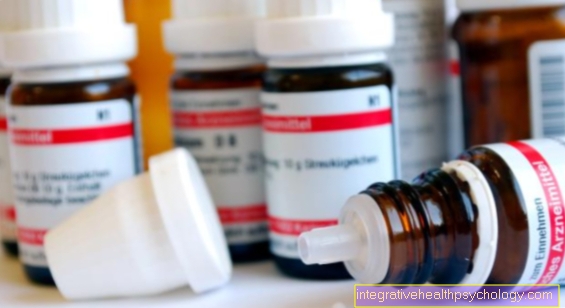

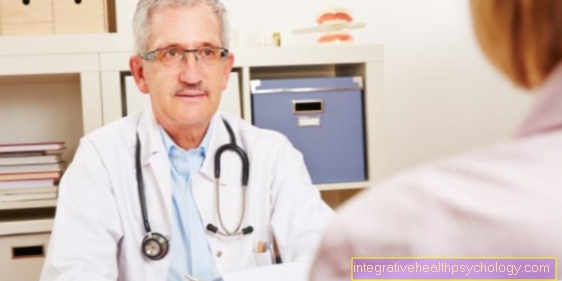
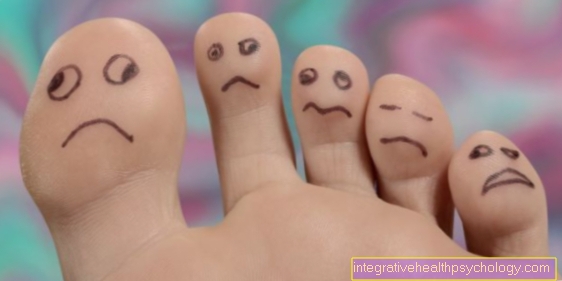




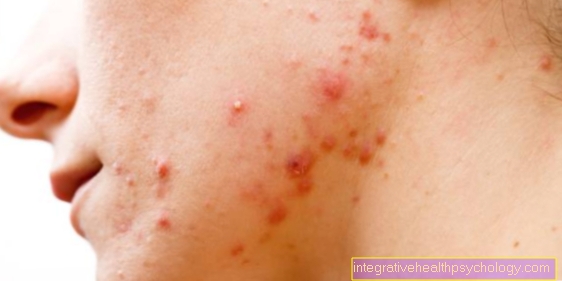

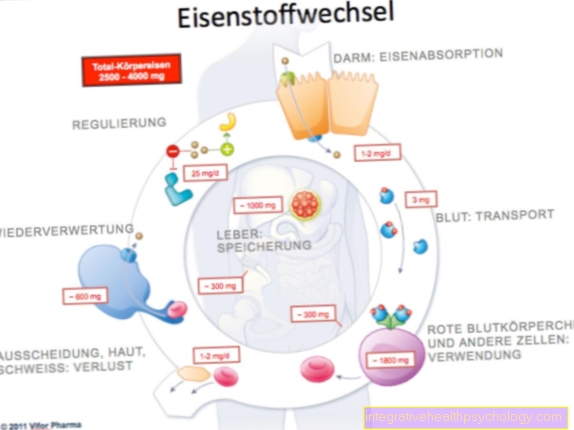
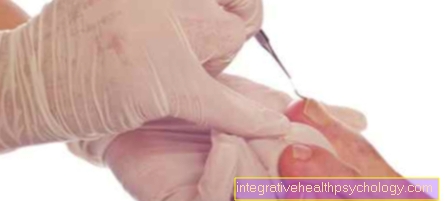

.jpg)


